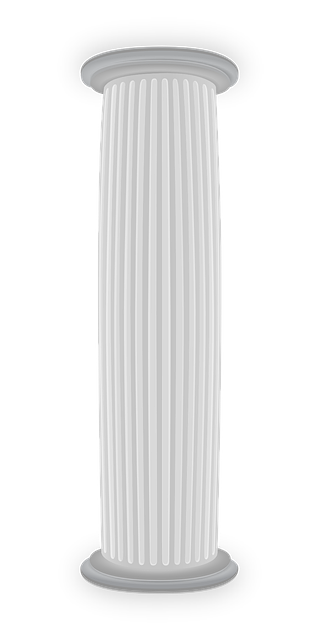Structural CAD drafting, using advanced software, transforms architectural designs into precise 2D/3D models, crucial for construction accuracy and efficiency. This meticulous process begins with conceptual design, involves detailed drafting, and adheres to engineering standards. Benefits include faster completion times, reduced costs, enhanced collaboration, and improved project visuals & analysis. Quality control through best practices, updated software, training, and peer reviews ensures consistency in construction documentation. Automated features streamline drafting while continuous skill development keeps drafters current in this evolving field.
In the realm of construction, accurate documentation is paramount for successful projects. Precision structural drafting, a cornerstone of modern construction, leverages advanced Computer-Aided Design (CAD) tools to create detailed, exact blueprints essential for building structures that meet safety and quality standards. This article delves into the intricacies of structural CAD drafting, exploring its key components, benefits, and best practices to ensure consistent excellence in construction documentation. Understanding these fundamentals is crucial for navigating complex projects efficiently.
Understanding Structural CAD Drafting: The Foundation of Accurate Construction Documentation
Structural CAD drafting forms the bedrock of accurate construction documentation, translating complex architectural designs into precise technical drawings. It involves creating detailed 2D and 3D models using Computer-Aided Design (CAD) software, capturing every facet of a structure’s geometry, dimensions, and specifications. This digital representation serves as a critical reference throughout the construction process.
By utilizing structural CAD drafting, architects, engineers, and contractors can ensure consistency between design intent and actual construction. Every element—from beams and columns to wall details and floor plans—is meticulously documented, allowing for better coordination among project stakeholders. Accurate dimensions, material specifications, and construction sequences are seamlessly integrated into the digital drawings, streamlining workflows and minimizing errors.
Key Components and Processes Involved in Precision Structural Drafting
Precision structural drafting is a meticulous process that combines technical expertise and cutting-edge technology, particularly in structural CAD drafting. It involves creating detailed, accurate drawings and models of structures, serving as the foundation for successful construction projects. Key components include advanced software capable of handling complex geometry and precise dimensions, ensuring every line and measurement is exact.
The processes involved start with conceptual design, where architects and engineers collaborate to translate ideas into preliminary structural layouts. This is followed by detailed drafting, where specialized draftspersons use structural CAD software to create comprehensive drawings. These include floor plans, elevations, sections, and detailed members’ specifications, all aligned with engineering standards. Coordination between different disciplines like architecture, mechanical, and electrical is vital to avoid clashes and ensure seamless construction documentation.
Benefits of High-Precision Drafting for Construction Projects
High-precision structural CAD drafting offers numerous advantages for construction projects, ensuring every detail is accurately represented in the documentation. One of the key benefits is improved project accuracy and efficiency. With precise measurements and detailed drawings, construction teams can work with confidence, minimising errors and miscommunications that often arise from imprecise plans. This leads to faster completion times and reduced costs associated with rework.
Moreover, advanced drafting software enables designers to create dynamic models, allowing for better visual representation and analysis of complex structures. This visual clarity helps in identifying potential issues early in the design phase, streamlining the entire construction process. The use of structural CAD drafting also facilitates better collaboration among project stakeholders, as everyone works from a unified digital model, ensuring everyone is on the same page throughout the building lifecycle.
Best Practices for Maintaining Quality and Consistency in Structural CAD Drafting
Maintaining quality and consistency in structural CAD drafting is paramount for accurate construction documentation. Best practices include adhering to strict standards and protocols, such as using up-to-date software with robust dimensional checking tools. Regularly calibrating equipment and ensuring all team members are trained on the latest industry standards can significantly reduce errors. Establishing clear communication channels and implementing peer reviews also play a crucial role in maintaining accuracy.
Consistency is key when it comes to file organization, naming conventions, and unit settings. Standardizing these aspects across projects streamlines the drafting process and eases collaboration among team members. Additionally, integrating advanced features like automatic dimensioning, text generation, and cross-referencing can enhance efficiency while minimizing the chance of human error. Regular updates on industry best practices and continuous skill development for drafters are also essential to stay ahead in the field of structural CAD drafting.
Precision structural CAD drafting is a vital process that ensures construction projects are realized with meticulous accuracy. By understanding the key components, adopting best practices, and leveraging high-precision techniques, construction professionals can significantly enhance project outcomes. The benefits, from error reduction to improved collaboration, underscore why structural CAD drafting is an indispensable tool in modern construction documentation.
